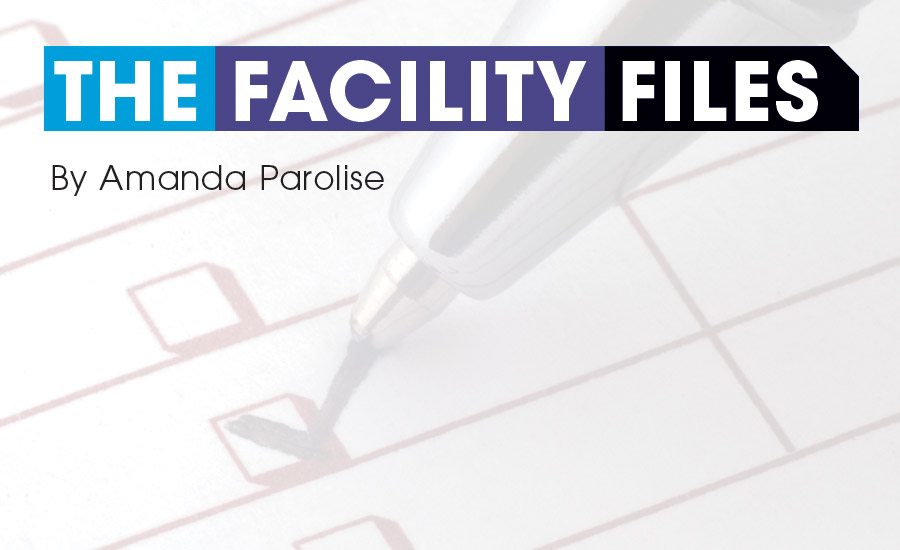This month’s Facility File focuses on retrofitting a hospital’s patient floor with the addition of one fan-powered HEPA filter unit per patient room on a 30-patient room floor. The Facility File will focus on the B2B September test to improve the room air-purification environment and to trap particles that are 0.3 microns or larger.
At the recommendation of the design team leader — the HVAC consulting engineer — the health care owner has chosen the project delivery method to be construction management (CM) in accordance with Construction Management Association of America (CMAA).
The health care owner has contracted the services of an owner representative along with a third-party commissioning (Cx) and testing, adjusting, and balancing (TAB) consulting firm (CxTAB). In addition, the hospital shall also hire an infection control (IC) consultant to advise the design team and the CM regarding the design and construction phase air quality control requirements. The HVAC consulting engineer along with electrical, plumbing, architect, and structural engineering sub-consultants will round out the design team.
The CM shall have a project manager. The in-house estimating team will include the mechanical and electrical estimators, a mechanical-electrical coordinator, and the company’s own in-house registered professional engineer to assist in value engineering in the conceptual phase of the job.
The design engineer, as well as the CM team, is directed to the 2019 ASHRAE Handbook – HVAC Applications Chapter 9 (Healthcare Facilities), Chapters 37-44 (Building Operation and Management), and Chapter 61 (HVAC Security). They will also read ASHRAE 2016, Chapter 29 (Air Cleaners for Particulate and Contaminants) and ANSI/ASHRAE/ASHE Standard 170 for a complete understanding of ventilation and air filtration for health care facilities. This information combined with the owner’s own knowledge of operating health care facilities will assist the design/CM team in understanding intricacies owning, operating, and managing this building.
With all these design guidelines from ASHRAE, the team discussed specific building standards maintained by the hospital that need to be applied to this project along with the topic of project scheduling/timeline. For the facility operation, with in-house staff and not an outsourced group, the staff will want to assure there is adequate contract specification requirements including those pertaining to operation and maintenance (O&M), training, preventive maintenance work order system, and energy operating budget.
At the end of the conceptual design phase CM project, the facility manager and a few of her O&M technicians, including the building automation system BAS operator, will want to contribute information to the design team member’s writing of the contract specification and more specifically the following activities: training, service contracts, parts inventory, and as-built drawings requirements.
For this September B2B, the design/CM team will work together as owner-designer-builder. Based on a building program construction budget, the CM estimator will be involved in the design phase and be able to contribute to the contract documents to stay within budget and on schedule. In the construction phase, the O&M technicians will want to revisit the issues noted above that were in the design phase.
Next comes the startup and commissioning phases, and the O&M staff will want to be proactive in following along with the CM team’s mechanical-electrical, in-house coordinator and the subcontractor’s startup personnel. Together, they’ll receive equipment and system training using the O&M manuals, contract drawings, and field coordination drawings (that will eventually become the record drawings).
Once the startup has been completed, the ATC subcontractor, hospital’s owner representative, and CxTAB consultant will oversee the air balancing of the existing central air system and new fan-powered filter boxes. The HVAC and ATC subcontractors will go through an automatic control system initial dry-run demonstration before the CM project manager, job superintendent, and their subcontractors demonstrate the HVAC system to the CxTAB consultant and O&M staff. The IC consultant will review the HVAC basis of design with the O&M staff in the design phase. In the construction phase, the O&M staff and the IC consultant will complete the infection control commissioning initiative and the IC commission report for the hospital.
The ATC subcontractor will also begin collecting system performance by trending pertinent HVAC system and equipment data including the following:
[X] Outdoor air dry bulb & wet bulb temperature [X] Room space pressure [X] Room particle count within each patient room [X] Patient room air dry bulb & wet bulb temperature [X] Pressure differential across filter units [X] Alarms [X] Off-site internet computer control interface.
Taking the same approach as the design engineer, the facility manager’s personnel will use a series of computer-generated touchscreen project checklists that allows her staff to confirm that the following facility files have been collected. This process should start at the beginning of construction and not at project closeout so that the facility files can be inputted into a computerized maintenance management software (CMMS) system. Touchscreen O&M checklists should include:
[X] Equipment shop drawings [X] O&M manuals, a parts list & lubricants [X] troubleshooting tips [X] remote monitoring instructions.
The O&M staff should review the contractor-produced sheet metal field fabrication/field coordination drawings prior to fabrication. Touchscreen service checklists should include:
[X] Location of automatic dampers, smoke dampers, and volume dampers [X] Filters [X] Equipment control devices [X] Access for servicing equipment.
The training process should include specific HVAC system ventilation and IC training but also emergency plan training due to unexpected alarm e.g., room space pressure alarm. The air balancing report will be completed and the as-built conditions will be updated after the final TAB report. This will require the TAB subcontractor to provide the air balancing reports along with the associated system flow diagrams noting quantities and pressures for rebalancing in the future as part of the project closeout documents. The touchscreen training checklists should include:
[X] Equipment [X] system [X] emergency plan [X] automatic controls [X] energy management.


